Ask Andrew – Midsummer Q&A
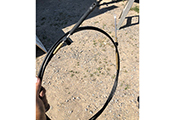
July 12, 2018
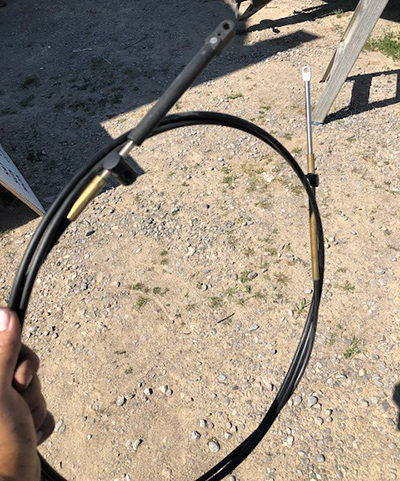 an example of a shift cable – note that the ends are manufacturer specific, and come in various lengths.
an example of a shift cable – note that the ends are manufacturer specific, and come in various lengths.
CYOB readers often ask questions about their boats and system. For this issue, I’ve answered a common question about engine control cables. Please send any questions to: askandrew@lakesidemarineservices.ca
How do I know when I need to service the control cables on my boat?
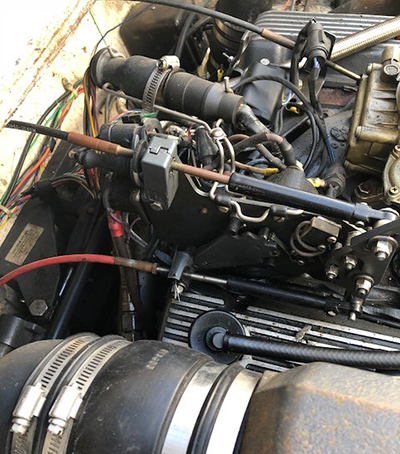 Every boat is unique, and cables aren’t always used the same way, or routed in the same fashion. But here is a breakdown of the types of cables used on both power and sail boats, including inboard, outboard and stern drives:
Every boat is unique, and cables aren’t always used the same way, or routed in the same fashion. But here is a breakdown of the types of cables used on both power and sail boats, including inboard, outboard and stern drives:
a) The shift control cable – this cable runs from the helm controls to the engine or transmission and uses a push/pull movement to move the boat from neutral into forward and reverse
b) The throttle control cable – this cable runs from the helm controls to the throttle control on the engine (in a gas engine, this connects to the carburetor. On a diesel, this connects to the injector pump). In each case, in very simple terms, by pushing on the throttle lever, more fuel is available for the engine to use, and it is able to increase in speed
the upper and lower shift cables on an OMC stern-drive unit. The upper (black) cable runs between the helm and the engine. The lower (red) cable runs between the engine and the stern drive
c) The choke cable – on gasoline engine, the choke cable runs from the helm controls to the carburetor and opens/closes a single flap that cuts off air to the carburetor, ‘choking’ it. With the flap closed, the engine is running on undiluted gas, allowing it to start and warm up easier.
d) The engine stop cable – on diesel engines, the engine stop cable runs from the helm position to the injection pump or governor and cuts of fuel supply to the engine, causing it to stop running
e) The lower shift cable – this is a secondary shift control cable on engines with a stern drive. The main shift cable runs from the helm to a bracket on the engine, where it meets with the lower shift cable, which shifts the gears (from neutral to forward/reverse) on the stern drive unit
In each case, the cable is made of an inner core that slides inside the sheath and allows it to push and pull between the controls and the engine. This inner core can stretch over time, and can bind up within the sheath. If either occurs, the cable should be replaced. Some manufacturers have cable ends that are specifically tailored to their engines or controls – so choosing the right cable type (as well as length) is important.
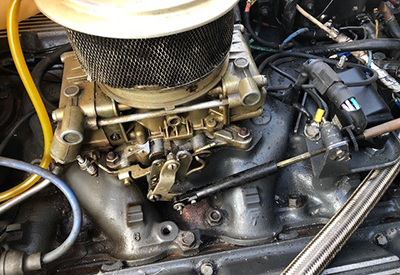 the throttle cable on an OMC onboard, connected to the carburetor.
the throttle cable on an OMC onboard, connected to the carburetor.
Here are a few symptoms that can be traced back to shift cables that should be replaced:
1) Rough throttle control – when moving the throttle cable, the engine makes ‘leaps’ from idle to very fast, with very little control in between
2) Difficulty in shifting between neutral and forward/reverse – shifting should be smooth – you shouldn’t have to fight to move the lever between gears
3) Having to pull very hard on a choke or engine stop cable to get it to work
4) The engine stalling when shifting gears on a boat with a stern-drive – may indicate that the cable should be adjusted, or replaced.
5) Hearing a grinding noise when the engine is in forward or reverse gear on an outboard or stern drive – this indicates that the engine isn’t fully in gear, and may mean that the cable has stretched and doesn’t have enough tension to fully engage the gear.
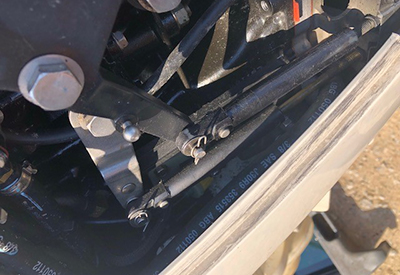 shift and throttle cables on an Evinrude outboard.
shift and throttle cables on an Evinrude outboard.
As you can see – maintaining and updating engine control cables is an important part in ensuring that your engine is running appropriately and safely. Here are a few maintenance tips:
– Lubricate cable ends and connections at least annually. I usually do this during a spring start-up
– Check for tension and ease of shifting regularly. At the earliest sign of struggling to shift gears, check the control cable
– Check the cable ends (at the helm control and at the engine) for any signs of wear or corrosion, and replace as necessary
– Check the pins and locking rings/cotter pins (these hold the cable ends in place) for wear. Replace or install new pins if they appear worn.
 Andrew McDonald is the owner of Lakeside Marine Services – a boat repair/maintenance firm based in Toronto. Andrew has worked in the marine industry for 12 years and is a graduate of the Georgian College ‘Mechanical Techniques – Marine Engine Mechanic’ program.
Andrew McDonald is the owner of Lakeside Marine Services – a boat repair/maintenance firm based in Toronto. Andrew has worked in the marine industry for 12 years and is a graduate of the Georgian College ‘Mechanical Techniques – Marine Engine Mechanic’ program.
Questions or comments for Andrew? Email him directly via: askandrew@lakesidemarineservices.ca




























